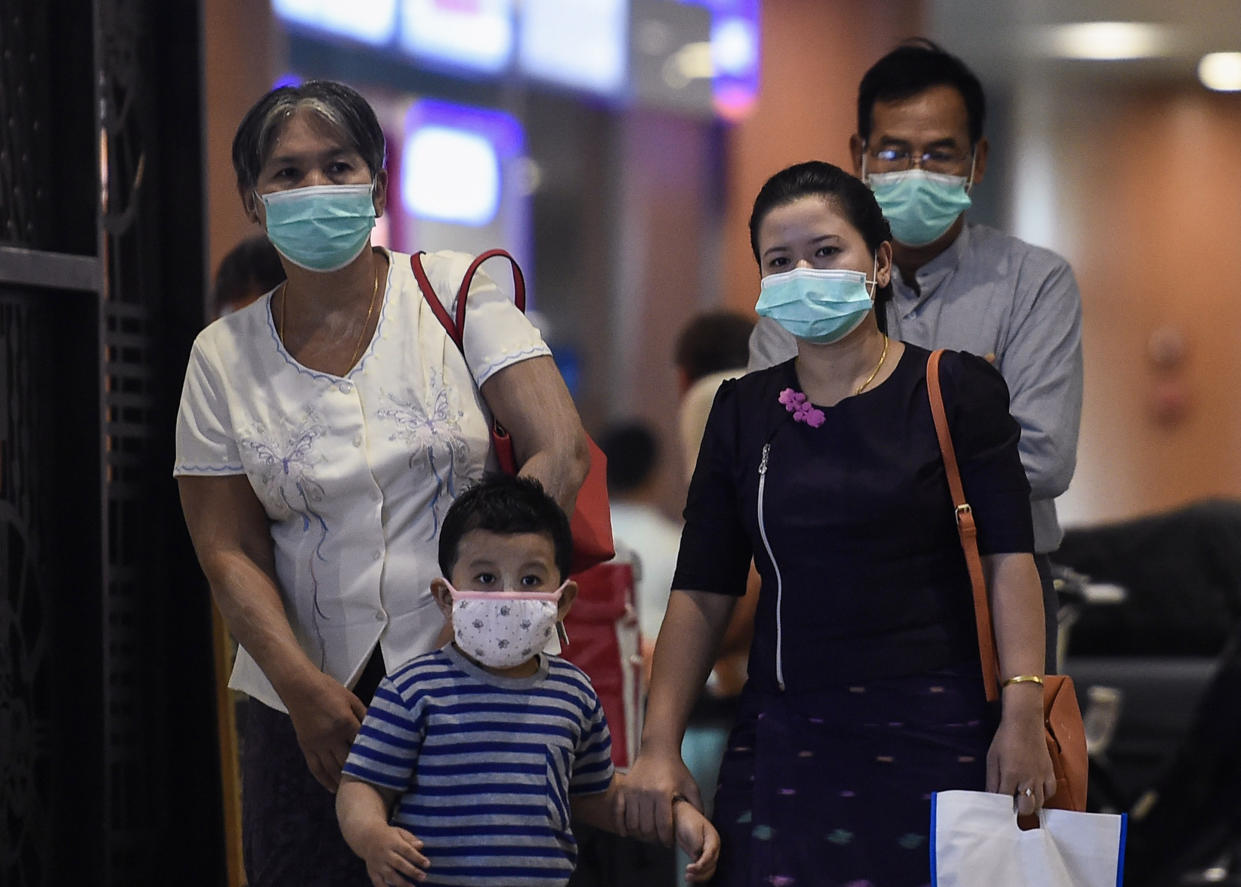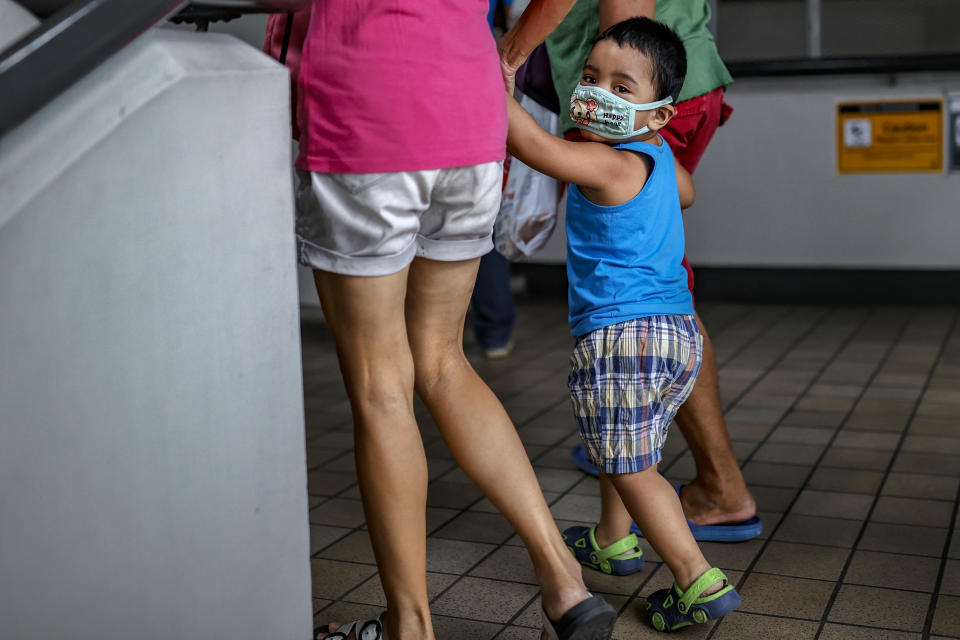With coronavirus confirmed in the UK, do masks help ward off infection? And how should they be worn?

China’s deadly coronavirus has arrived in the UK, with two people testing positive for the infection.
Virtually unheard of a month ago, the pathogen has reached at least 16 countries, including the US, Canada, Australia, Germany and France.
The death toll hit 170 on Thursday, with more than 7,000 cases across every region of China.
For weeks, photographs have shown worried locals wearing masks in a bid to protect themselves.
Like other coronavirus strains - which trigger everything from the common cold to the severe acute respiratory syndrome (Sars) outbreak of 2004 - symptoms tend to be flu-like, such as fever and breathlessness.
In the most severe cases, victims die from pneumonia.
Authorities in the city Wuhan, where it all started, have made it mandatory for locals to wear masks when out and about, The Telegraph reported. Failing to do so will result in “punishment”.
Chinese authorities have also sent masks to healthcare workers treating suspected or confirmed cases.
In the UK, there has been “considerable increase” in demand for masks in pharmacies, according to the National Pharmacy Association.
Boots also confirmed a rise in customer interest, with several products selling out.

Could masks help stem the spread of the new coronavirus?
The new coronavirus is thought to have emerged from a seafood and live animal market in Wuhan.
Now closed, the market may have “conducted illegal transactions of wild animals”, the BBC reported.
Chinese authorities confirmed last week the virus can spread from person-to-person via sneezing, coughing or shaking contaminated hands.
A mask that blocks droplets carrying the virus from entering the nose or mouth may therefore help, to an extent.
Surgical masks, worn by doctors during operations, are designed to block liquid droplets that may “splash” into their face, the New Scientist reported.
They do not, however, fully seal the nose and mouth or generally cover the eyes.
Yahoo UK previously reported how cold and flu viruses can enter the body via the eyes.
Specialist surgical masks may appear more effective when used in a medical setting than by the general public. This is thought to be due to doctors also wearing protective gloves, goggles and gowns.
Hospitals are also disinfected regularly, with masks theoretically being thrown away after every use.
READ MORE: Race is on to develop a vaccine against China's coronavirus
The surgical mask N95 respirator filters “at least 95% of airborne particles”, according to the Centers for Disease Control and Prevention (CDC).
It supposedly filters particles as small as 0.3 microns (0.0003mm), Forbes reported.
Coronaviruses are on average a little over 0.1 micron (0.0001mm) and could therefore get through.
A study by the UT Southwestern Medical Center found “no significant difference in the effectiveness” of standard surgical masks and N95 respirators when it comes to preventing flu.
N95 respirators reportedly have to be properly fitted to a user’s face and are unsuitable for children or those with facial hair.
Users often also find them uncomfortable, the UT scientists reported.
N95 respirators can also make breathing difficult. This may be problematic among coronavirus sufferers, with breathlessness being a tell-tale symptom.
Adherence could also be an issue.
Professor Jonathan Ball, from the University of Nottingham, told the BBC “it's quite a challenge to keep a mask on for prolonged periods of time”.
“Research shows compliance with these recommended behaviours reduces over time when wearing face masks for prolonged periods,” Dr Jake Dunning, head of emerging infections and zoonoses at Public Health England, added.
Well-meaning people can still get infected if their hands become contaminated and they unwittingly infect themselves after taking the mask off.
READ MORE: The chart that shows the rapid rise in China's coronavirus cases
While little is known about the new coronavirus, cold and flu pathogens can linger for up to 48 hours after being “sneezed out”.
“Face masks play a very important role in clinical settings, such as hospitals,” Dr Dunning said.
“However, there is very little evidence of widespread benefit from their use outside of these clinical settings.”
“People concerned about the transmission of infectious diseases would do better to prioritise good personal, respiratory and hand hygiene.”
Nonetheless, the CDC recommends those with coronavirus “wear a face mask when you are in the same room with other people and when you visit a healthcare provider.
“If you cannot wear a face mask, the people who live with you should wear one while they are in the same room with you.”
To prevent infection, the World Health Organization advises cleaning hands regularly with soap and water or sanitiser.
People should also cover their nose and mouth when sneezing or coughing, avoid those with flu-like symptoms, thoroughly cook meat and eggs, and stay away from animals.
How to put on a mask to protect yourself from the new coronavirus
For those who do choose to wear a mask, the San Francisco Department of Public Health recommends following the packaging’s instructions over how it should be used and stored.
Disposable ones should be thrown away at the end of the day or when they become overly “moist”.
If instructions are unavailable, the San Francisco Department of Public Health urges users to wash their hands or use sanitiser before touching the mask.
Next, ensure there are no tears or holes in the mask.
Find the top by looking for a “stiff bendable edge”.
The front tends to be coloured, with the white side touching the face.
READ MORE: China's coronavirus is 'spreading quicker than Sars'
If the mask has loops, place these around your ears.
For masks with ties, bring it to nose level, placing the ties over the crown of the head before securing with a bow at the nape.
If the face mask has bands, hold it with the noise piece or place the top of the mask at your fingertips.
Bring it to your nose and pull the top strap over your head so it rests over the crown.
Pull the bottom strap over so it rests at the nape of your neck.
Mould the stiff edge of the mask to the shape of your nose.
Pull the bottom over your mouth and chin.
When you come to remove the mask, start by cleaning your hands.
Avoid touching the front, which could be contaminated. Instead, reach for the loops, ties or bands.
Gently pull the mask away from you, before throwing it away and washing your hands.
What is the new coronavirus?
Constantly-evolving viruses can make the “jump” over to humans.
Most of those who initially fell ill worked at, or visited, the market.
Fatal pneumonia comes about when a respiratory infection causes the alveoli (air sacs) in the lungs to become inflamed and filled with fluid or pus, according to the American Lung Association.
The lungs then struggle to draw in air, resulting in reduced oxygen in the bloodstream.
“Without treatment the end is inevitable,” said the charity Médecins Sans Frontières.
“Deaths occurs because of asphyxiation.”
Sars made headlines in the early 2000s after 774 people died across dozens of countries, mainly in Asia.
Genetic analyses reveal 2019-nCoV is more closely related to Sars than any other coronavirus.
The BBC notes, however, the death toll of the new strain “remains far lower”.
The CDC has warned there is no specific treatment for coronaviruses.
If the infection triggers pneumonia, doctors work to combat the complication.
When a virus is to blame – like 2019-nCoV – pneumonia may be treated via “antiviral medication”, according to the American Lung Association.
Professor Peter Horby from the University of Oxford claims, however, there is “no effective anti-viral”, with treatment being “supportive”.


